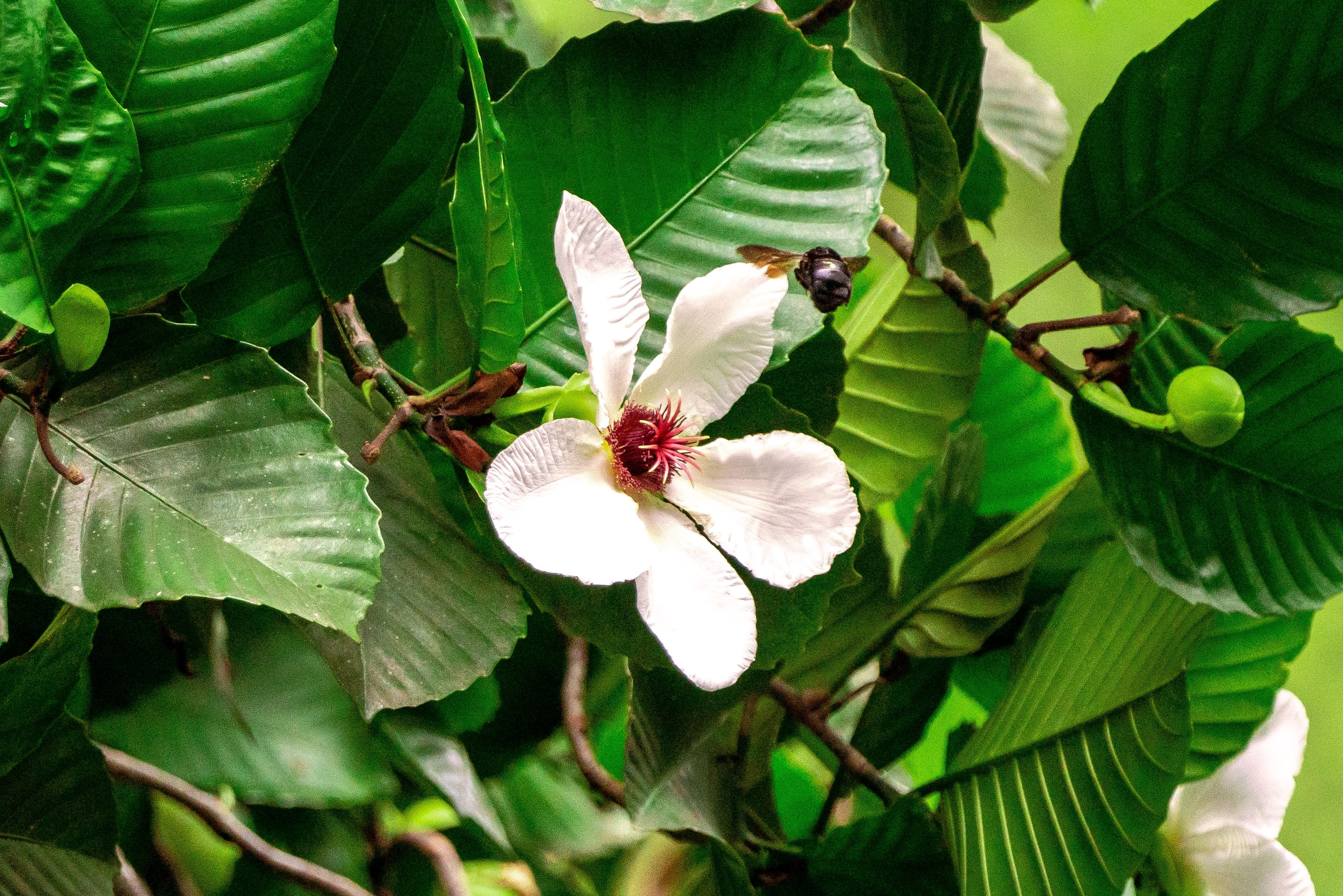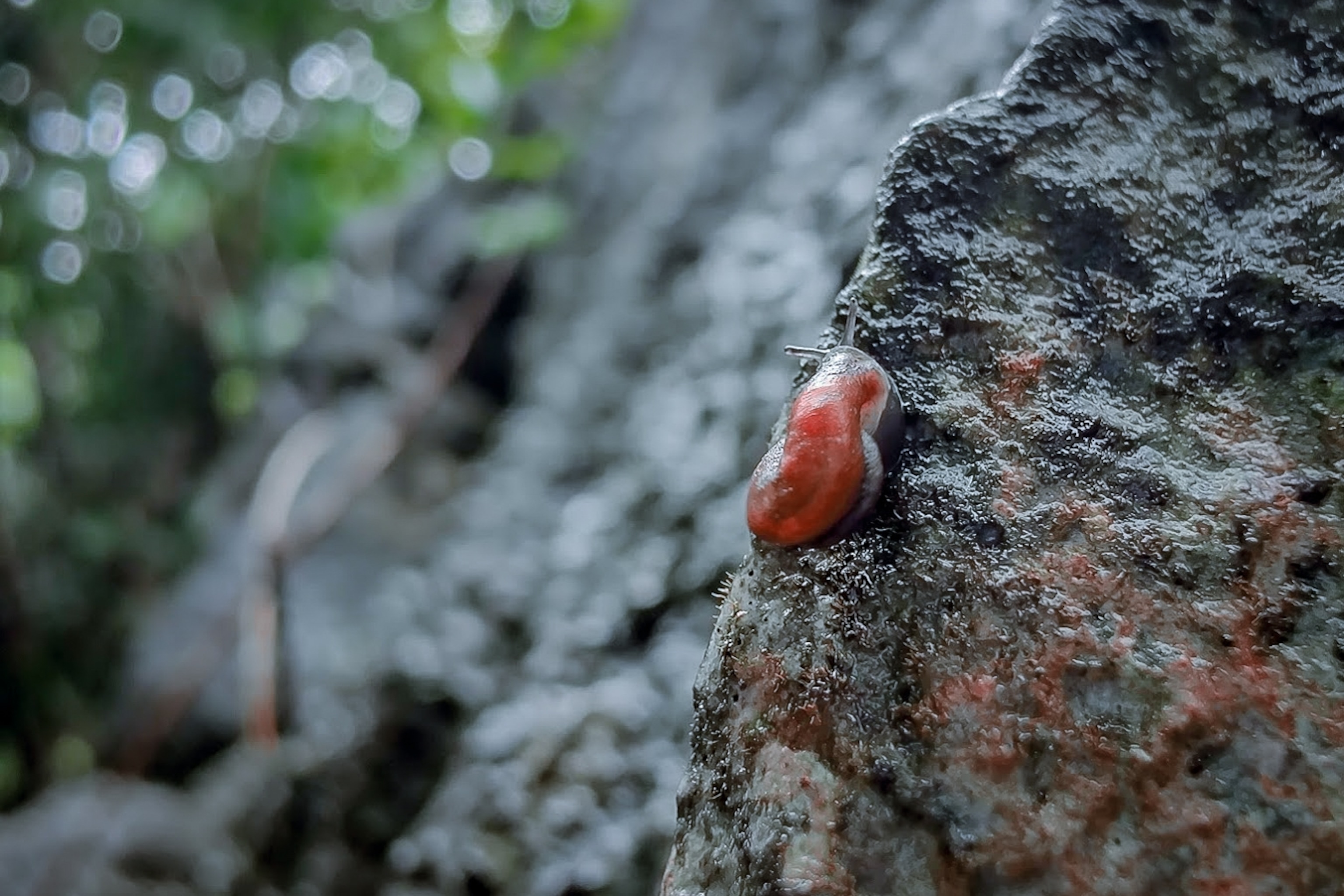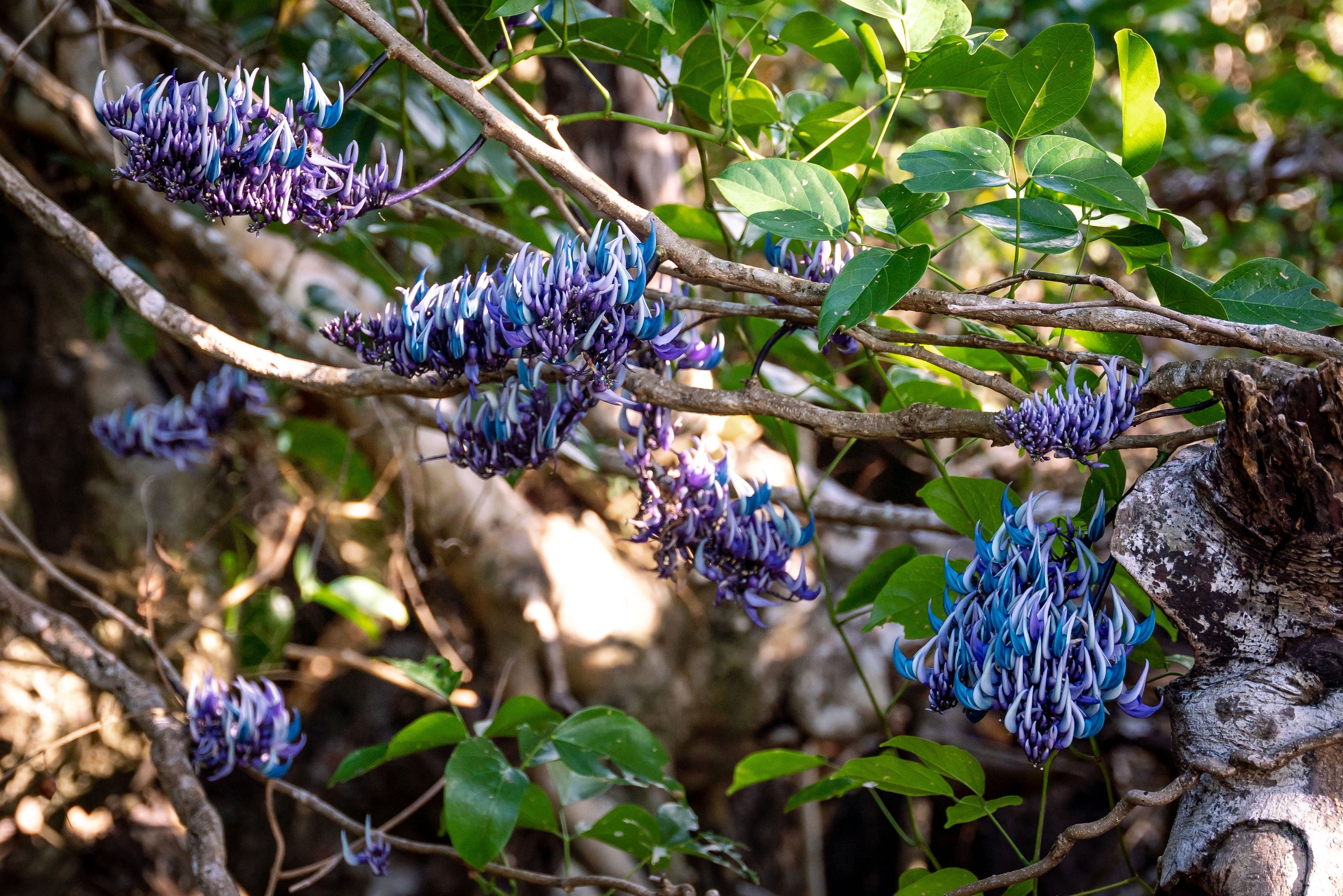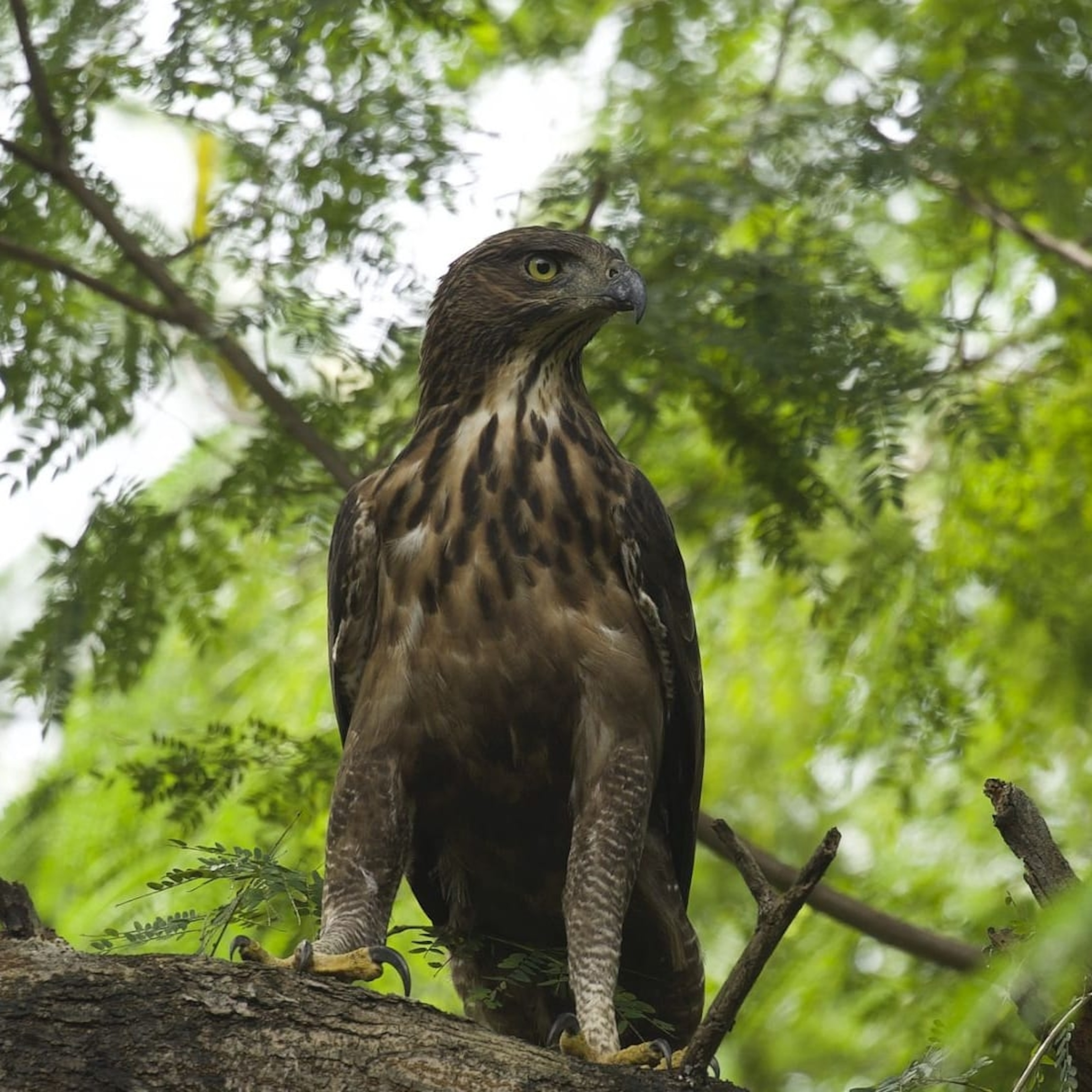From seascapes to mountaintops, there is an abundance of natural beauty in the Philippines. In a restored forest in the province of Rizal, rare animals and plants have found a home. Tactic hornbills eat fruits and greet visitors at the foot of the trail, while the long-tailed macaque waits; sometimes blessing passersby with a sighting as they lounge on canopies.
This is Masungi Georeserve: an award-winning geotourism site that began as a restoration project for around 400 hectares of deforested land over twenty years ago. It sits just an hour-and-a-half drive from the capital of Manila (47 kilometers away) so close to the urban city that the outline of skyscrapers are visible from its peaks.
There are hundreds of species of flora and fauna that can be spotted on winding trails through the exposed limestone karst formations.

“Karst landscapes are considered arcs of biodiversity, and they're very difficult to access. So they tend to have very high rates of endemism,” says Ann Dumaliang, Masungi Georeserve Project Manager.
Dumaliang is also a National Geographic Explorer and a Regional Finalist for Young Champions of the Earth by the United Nations Environment Programme (UNEP). She has dedicated her life to the conservation of this site, having watched the forest heal from its former wreckage.
It’s only been less than six years since they have opened the georeserve to visitors. Dumaliang and her family, who are the bedrock of this conservation project, are very careful about the numbers of travelers they take in at a time. Sustainable tourism has helped them, not just in funding, but towards raising public awareness towards the dangers the area has faced.
“There are those with interests that are not in line with conservation,” says Billie Dumaliang, Ann’s sister and a Masungi Georeserve Trustee. “But this is a conserved area. We believe these areas should be free from human exploitation. They should be protected.”

The sisters Billie and Ann Dumaliang know this from firsthand experience. They were little kids when they first went to Masungi Georeserve. At the time, the land was barren. It was still undergoing the long reforestation process, thanks to the efforts of their father and Masungi Georeserve Foundation President, Ben Dumaliang.
In many ways, the sisters have grown up with this place—and part of their mission is to educate the travelers that do come by exposing them to the same experience.
For instance, one of the georeserve’s signature hikes, called “The Legacy Trail”, is an hour-long climb through grasslands that allows visitors to participate in their restoration journey and take care of the land through tree planting or tree nurturing (depending on the season) with the local park rangers. These rangers also teach visitors about the importance of the georeserve’s unique landscape.
In the Philippines, karst landscapes cover around only 10 percent of the total land area; they make up some of the country’s most popular tourist destinations, including the Chocolate Hills of Bohol and the Subterranean River in Puerto Princesa, Palawan. Masungi Georeserve houses five interconnected karst formations, estimated to be around 60 million years old.
The uniqueness of karst formations so close to the main hub of Manila also attracts those who seek to exploit their resources: particularly large-scale quarrying companies that want to capitalize on the abundance of limestone. There are also illegal loggers that come for the hardwood found in the forests. These are the threats the land must be defended against, even to this day.

A center of biodiversity
There are countless creatures living in Masungi Georeserve that need to be protected. Many of these species are endemic to the Philippines, like the Philippine Hawk Eagle which is endangered due to habitat loss. Here, they are spotted in families.
There is also the nocturnal North Luzon Cloud Rat; an animal so elusive that the Dumaliangs and their team of park rangers have yet to capture a proper photo, finding themselves overwhelmed whenever an appearance is made.
“It's a fast disappearing species that many Filipinos do not even know about yet,” Ann Dumaliang says. “It’s emblematic of how unique Luzon is meant to be for small mammalian life.”
Luzon, where Masungi Georeserve is located, is one of the country’s major islands. A study that was published in the scientific journal Frontiers of Biogeography in 2016 found that it has the greatest concentration of unique mammal species in the entire world. According to the study, 52 of the non-flying mammal species found on Luzon were endemic to the island, like the North Luzon Cloud Rat.
“We’ve [studied] a lot of charismatic mammals, but there is more potential for endemism and uniqueness among the reptiles, the amphibians, and insects,” Dumaliang adds. “We’ve largely looked at the surface forest animals but we haven’t really gone into the caves, which is an even more unique ecosystem.”

Just recently, in October 2020, a team of Filipino scientists from the University of the Philippines Los Baños discovered a unique subspecies of microsnail that measured only 4.4 to 5.0mm wide, around the size of a single grain of rice. It’s been named the Masungi Microsnail.
Kindling the love of wildlife
There have been many exciting discoveries since Masungi Georeserve began working with scientists. Dumaliang traces it back to 2015, when scientists discovered JC’s Vine, also called the Purple Jade Vine (Strongylodon juangonzalezii), found in only four sites across the entire country.

“The green jade vine is already very rare,” She says. “It’s so unique that we find it on the back of our five-peso coin! Then comes a purple variety that people hardly know about, and we have them growing in exuberant ways. That was definitely an ‘aha!’ moment that demonstrated how unique the life forms here are.”
Every year when the jade vine blooms, the sight of the lilac flowers across the rocky landscape brings cause for celebration.
It isn’t just the endangered species that are getting people to pay attention. Pictures of an Indigo-banded kingfisher that lurks by the staff’s residential quarters have gone viral on the internet. It shows up everyday around
2 o’ clock in the afternoon to hunt for fish by the stream; just one of the many wildlife species that live comfortably in this land.
The 5-inch kingfisher, which the team has named Blue, is now recognizable to many of the Masungi Georeserve’s followers, because of their work in conservation storytelling.

“The Philippines is one of the megadiverse countries of the world,” Dumaliang says. “Science is how we learn about the world, how we learn about ourselves, and for the Philippines, how we can regain a sense of identity.”
“Without a story, it's easy to forgo a lifeless rock formation. But our story has always focused on the landscape. [We want to create] a unique sense of place that people can rally behind, understand, and love.”




